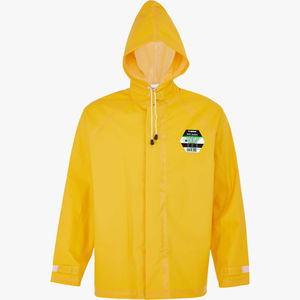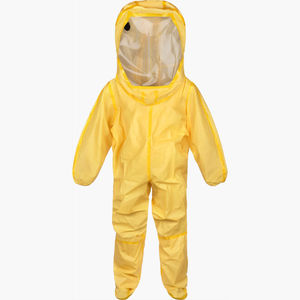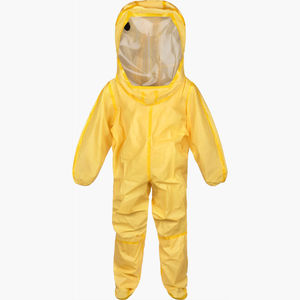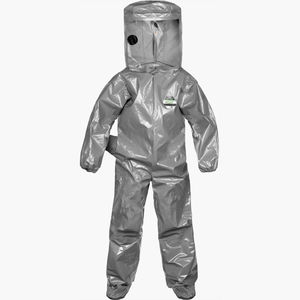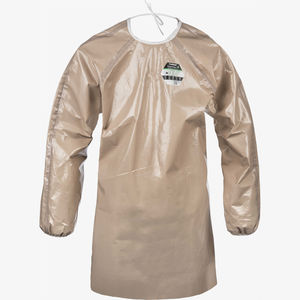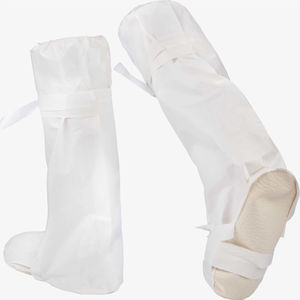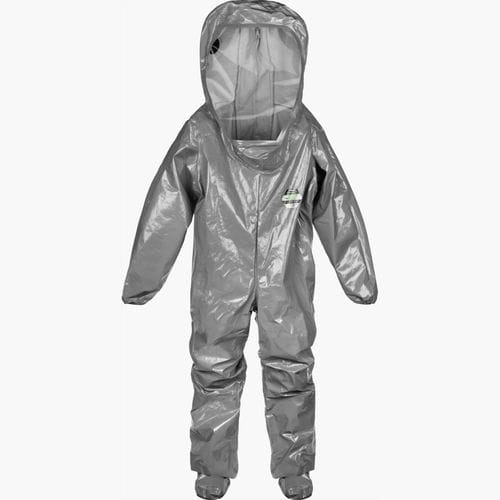
Work coveralls CT3S450PVCfabricfor the chemical industry


Add to favorites
Compare this product
Characteristics
- Other characteristics
- work
- Material
- PVC, fabric
- Applications
- for the chemical industry
- Other characteristics
- zippered
Description
Rear Entry encapsulating suit with 20mil PVC visor.
Attached boots with boot overflaps.
Expanded back.
To be used with internally worn Self-Contained Breathing Apparatus and breathing mask (not supplied).
Certified to EN 14605 Types 3 (jet sprays) and Type 4 (liquid sprays) of liquid chemicals (not gas-tight).
Certified to the infectious agent standard EN 14126; fabric achieves highest class in all four tests. (Type 3-b, 4-b,5-b and 6-b).
Rear mounted zip with storm flap.
One air exhaust port with protective shroud to allow escape of exhaled air.
Elastic wrists (use with push-lock glove connection system) Spacious and generous design for comfort and freedom of movement.
Powered by Permasure®. Use to assess real world safe-wear times for over 4000 chemicals.
Note: This is not a gas-tight suit and is not suitable for protection against hazardous gases and vapours.
Features: Tape sealed seams, Storm flap over zipper, Expanded back for SCBA, Encapsulated, 20 mil PVC faceshield, Attached sock boots with boot flaps, Not gas/vapor tight, Sealed seams, Rear entry, 1 exhaust port with shroud, Expanded back
Physical properties data is based on standard tests required by CE certification designed to allow easy comparison of the strength, durability and robustness of different garments. Lakeland's "Guide to Chemical Suit Selection" contains easy reference comparison tables of Lakeland garments with main competitors along with a glossary with brief explanation of the tests.
Catalogs
No catalogs are available for this product.
See all of Lakeland‘s catalogs*Prices are pre-tax. They exclude delivery charges and customs duties and do not include additional charges for installation or activation options. Prices are indicative only and may vary by country, with changes to the cost of raw materials and exchange rates.



